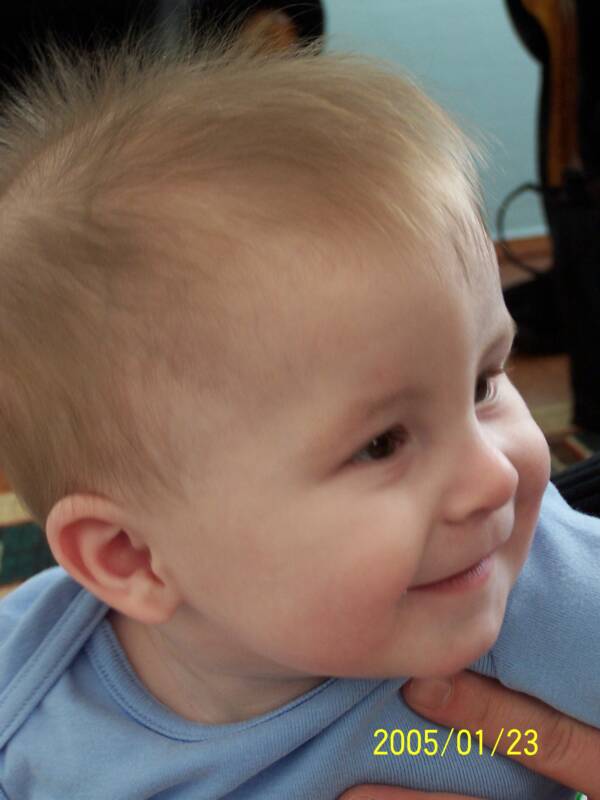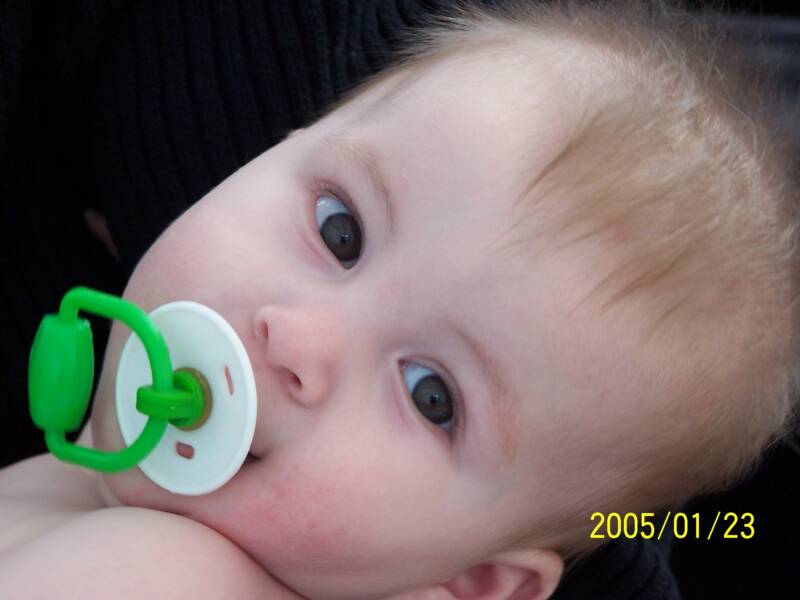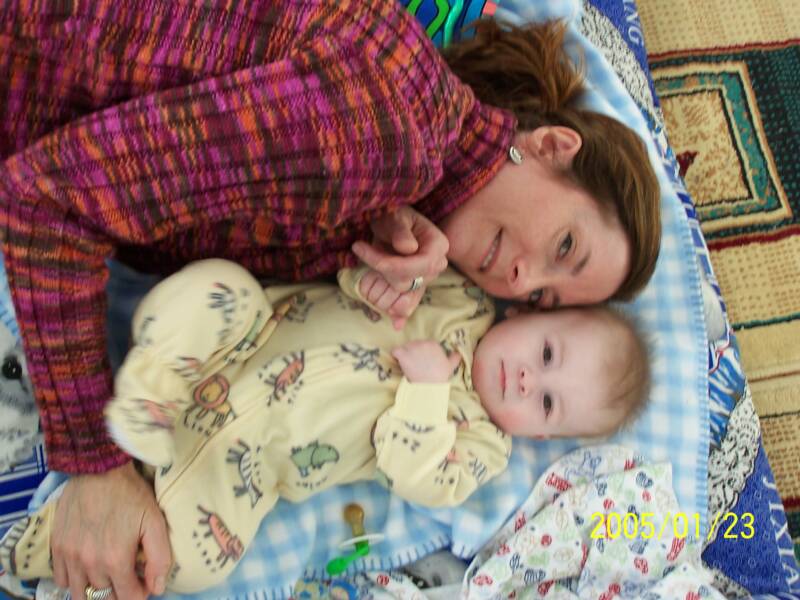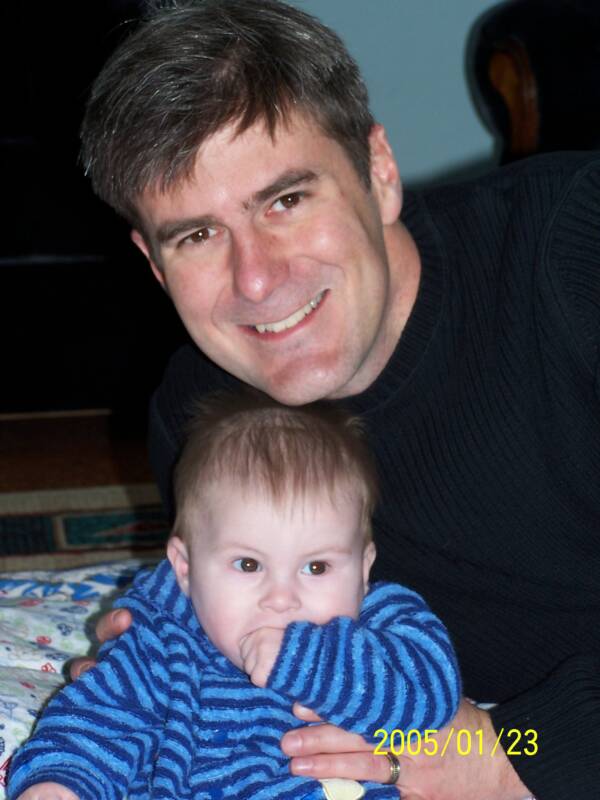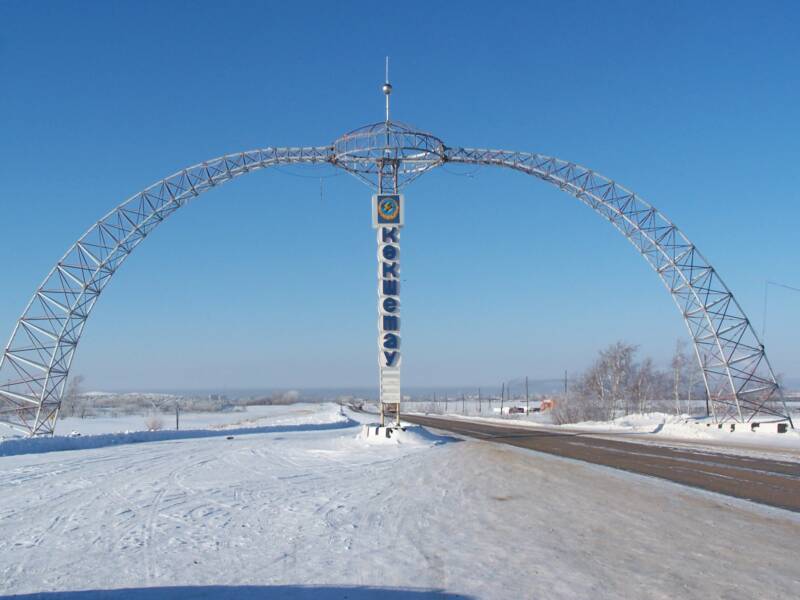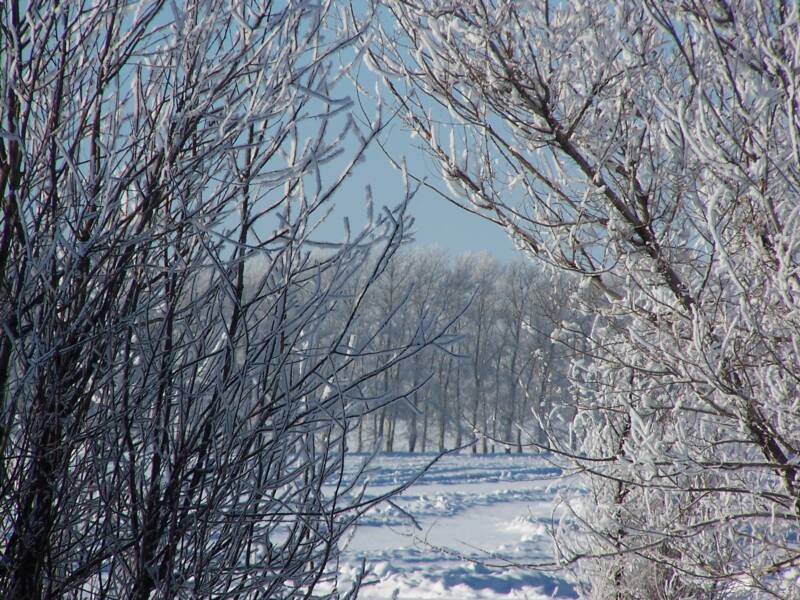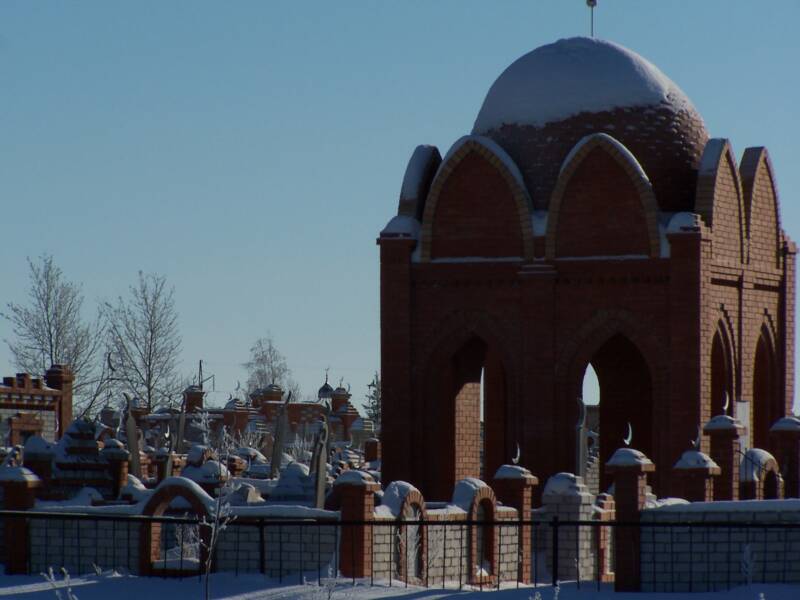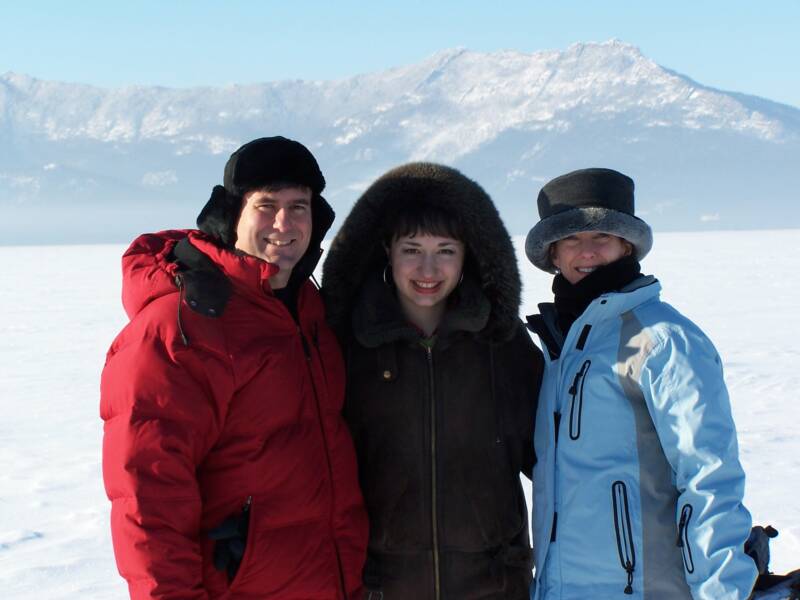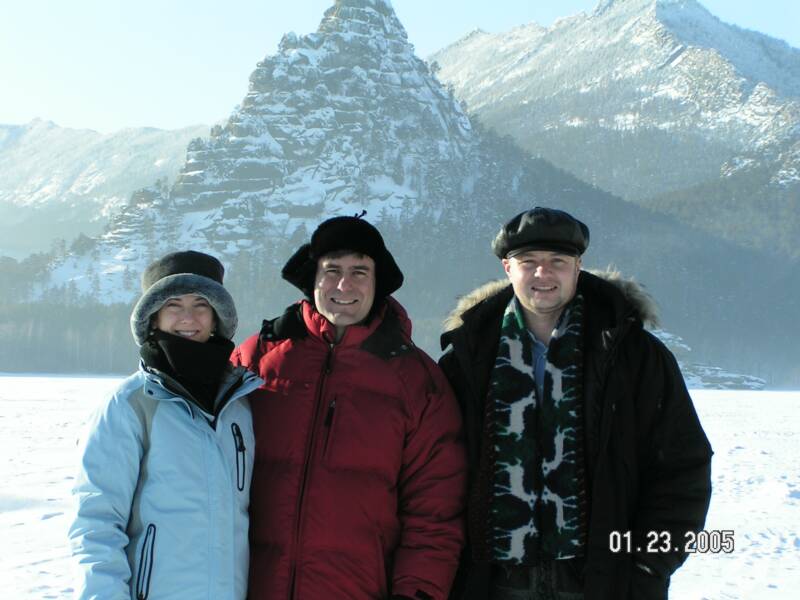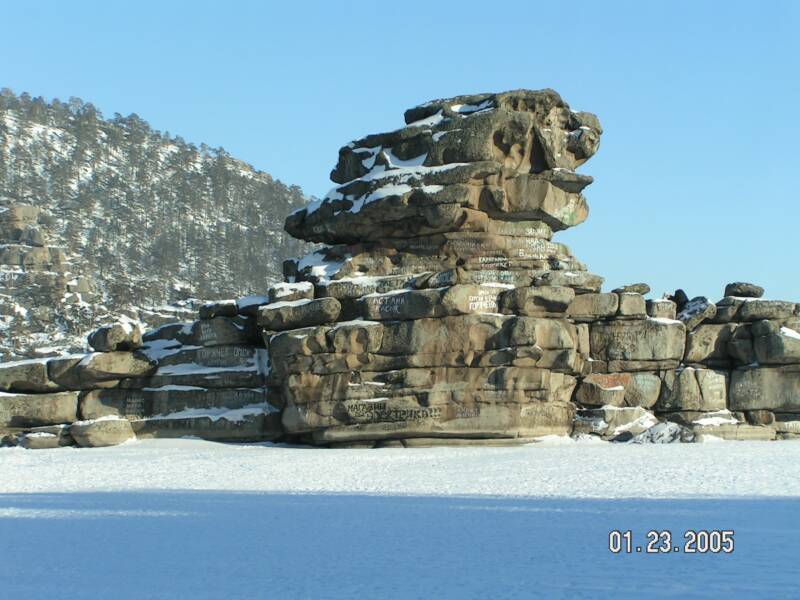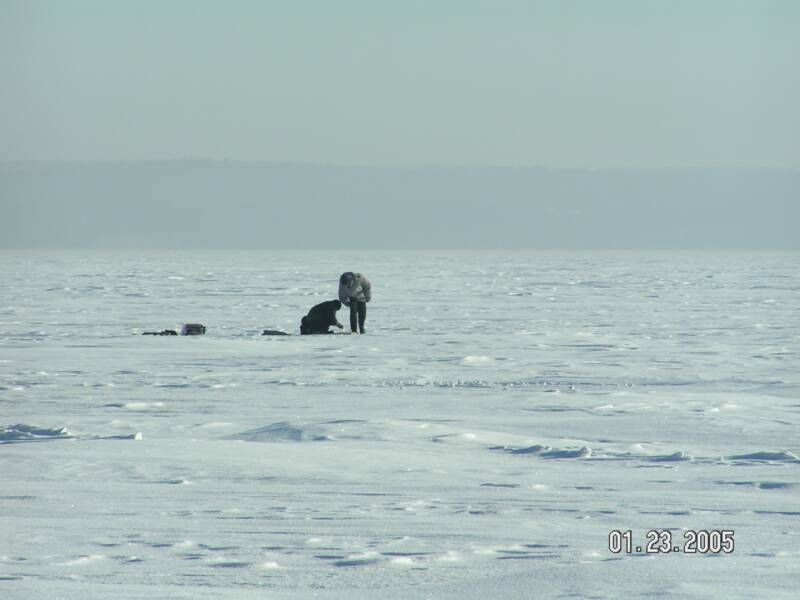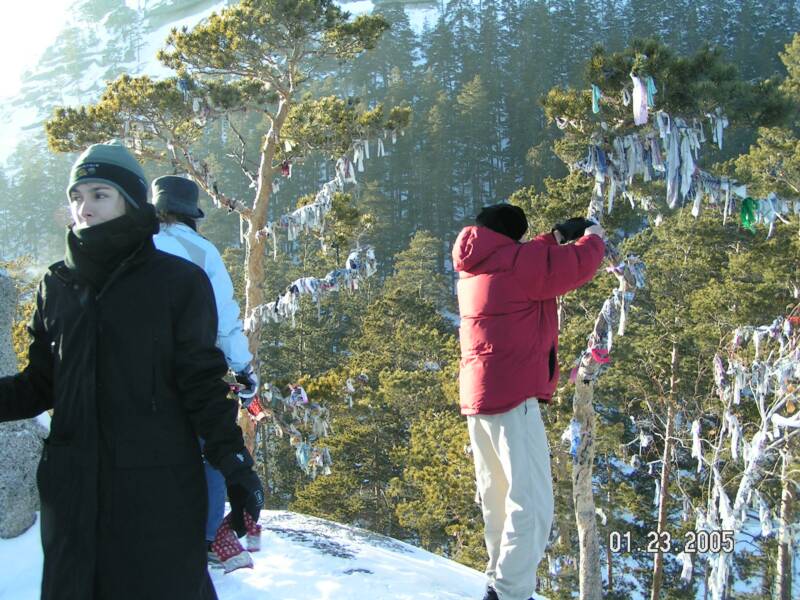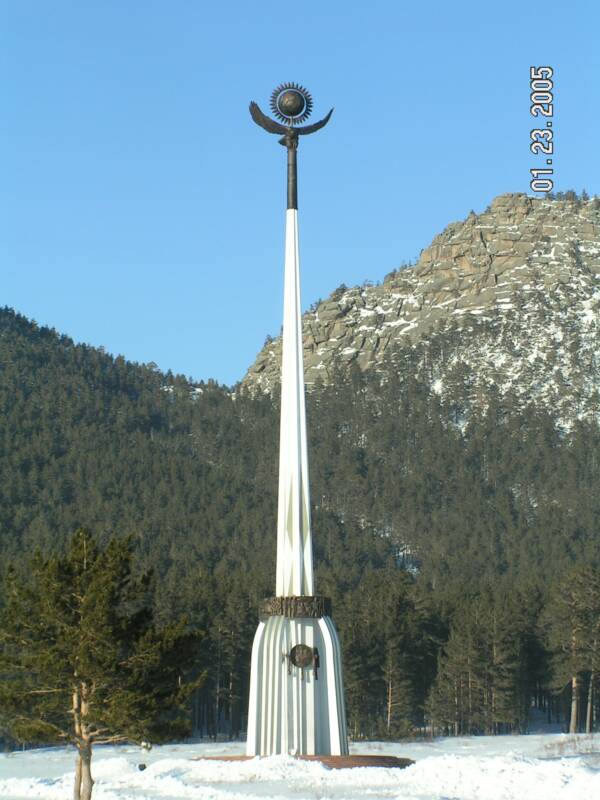In which we learn the origins of Owen's home.
A special treat today. After our visit with Owen, Inna and Oleg, our driver, invited us and the Strelos for a day trip to the nearby lake area. It was a chance to see the sights and hear a little bit more about Kokshetau and Kazakh culture. It was a fantastic afternoon.
On the way, we got on the topic of Kazakh weddings. They're much different than American weddings, Inna told us. Less formal, but they last for three days. The first day is the official day, when the couple registers their wedding. That afternoon and in the days that follow, family and friends join the bride and groom to play games and celebrate.
One of the games is "mauna," based on the idea of the communal steam baths popular in Kazakhstan but played in the couple's home. Guests pay an entrance fee, as if they were going to the baths, but the money goes to the bride and groom. Inside, guests hide money throughout the house and the pair must find it.
Unlike American weddings, too, the couple picks only one person each to stand up with them. The groom's friend helps him with one of the other games-- the one where the guests steal the bride and hide her and the two men must find her. In another, only the bride's shoe is stolen. When they find it, the groom drinks from it for the rest of the party.
Oleg has been the groom's man for three weddings. Matt offered to let him drink from his boot. Oleg politely declined.
We passed several small villages along the way. Although much larger than the more modern homes we've seen in Kokshetau, Inna explained that these older homes have no indoor plumbing and the occupants use an outhouse even in the depths of winter. We saw horse-drawn sleds pulling hay bales and cattle congregating on the front steps. Cemeteries bordered both sides of the road as well. Muslim to the east and Christian to the west.
We were on our way to the lake resort town of Burabay, some 45 minutes north of Kokshetau. Inna told us that in the nineteenth century, Cossacks, wandering Russian militia, discovered this part of the country and wrote stories of its beauty when they returned home. The Russian government decided to claim it, but the colonizers they sent somehow missed Burabay and, seeing Kokshetau's smaller lake, mistook it for the same place. Thus, Kokshetau was founded.
Arriving in Burabay, we weren't disappointed by its beauty. Forests line the roads and the tall, thin trees have turned crystalline with ice that reflects the light. The lake itself is a wide frozen plain. Tourists walk out to the middle of it to snap photos of the surrounding mountains and fishermen cut holes to fish. Oleg told us they use bits of bread or tiny shrimp as bait.
According to Inna, the locals tell a legend about the creation of Burabay. When Allah created the world, he gave different parts of it different attractions. Some places boasted high, snow-capped mountains. Others enjoyed deep lakes and streams. Still others were blanketed with thick woods. When he came to Kazakhstan, however, he had nothing left but steppes and desert.
Disappointed, a young Kazakh boy challenged Allah to a game of hide-and-seek. With nowhere to hide in the steppes, Allah had to create the great mountains and secret himself behind those. The clever boy stole up behind him and cut a small hole in Allah's bag of creation letting lakes and forests out as well, creating Burabay.
In the middle of the lake is a small cliff. If you look closely, you can see the face of a woman on it. Inna and Oleg took us to another spot where we could walk across the ice for a closer look. There, Inna told us another legend.
In this one, the Kazakhs were in the middle of a long war against a neighboring tribe. Both sides claimed and lost cattle, land and women. In one battle, the tribes fought for the hand of a particularly beautiful girl. She stopped the fighting by agreeing to marry the man who could master all of her challenges. Many tried, but only one handsome young man could solve all of her riddles and puzzles. An evil older suitor refused to let the couple be wed and in vengeance cast a spell on the girl, turning her into a hideous old crone. In despair, she turned to stone and so today, if you look at the cliff from one side, you see the beautiful girl she was. From the other, you see the crone.
As we left Burabay, Oleg led us up a hill to see trees bound in ribbon. According to legend, if you tie a ribbon around a branch you know you will one day return to Burabay. He tore one of his handkerchiefs into fourths and we all had a chance to make a wish.
By this point, the four Amerikanyetc had frozen toes and could no longer feel their noses. We politely but firmly declined Oleg's offer to take us on a walk to see the Khan's throne. Oblai (sp?) Khan is still revered in Kazakhstan for uniting the three "jutes" or tribes that split the country in older times. You can see his likeness throughout the city. Oleg told us we should have brought some vodka to warm us up and, indeed, a carload of Kazakhs next to us were standing out in the cold with bare hands drinking tiny cup-fulls and eating snacks. Thankfully the Strelos' boys needed to be fed so we had an excuse to hurry home.
It was a once-in-a-lifetime chance to see more of the culture than the relative comfort of a warm cottage tended by a smiling house-keeper. And it was fun to see the happiness and adventure that can permeate so deeply into a culture living on frozen ground in tiny homes with outdoor plumbing and government provided heat.
